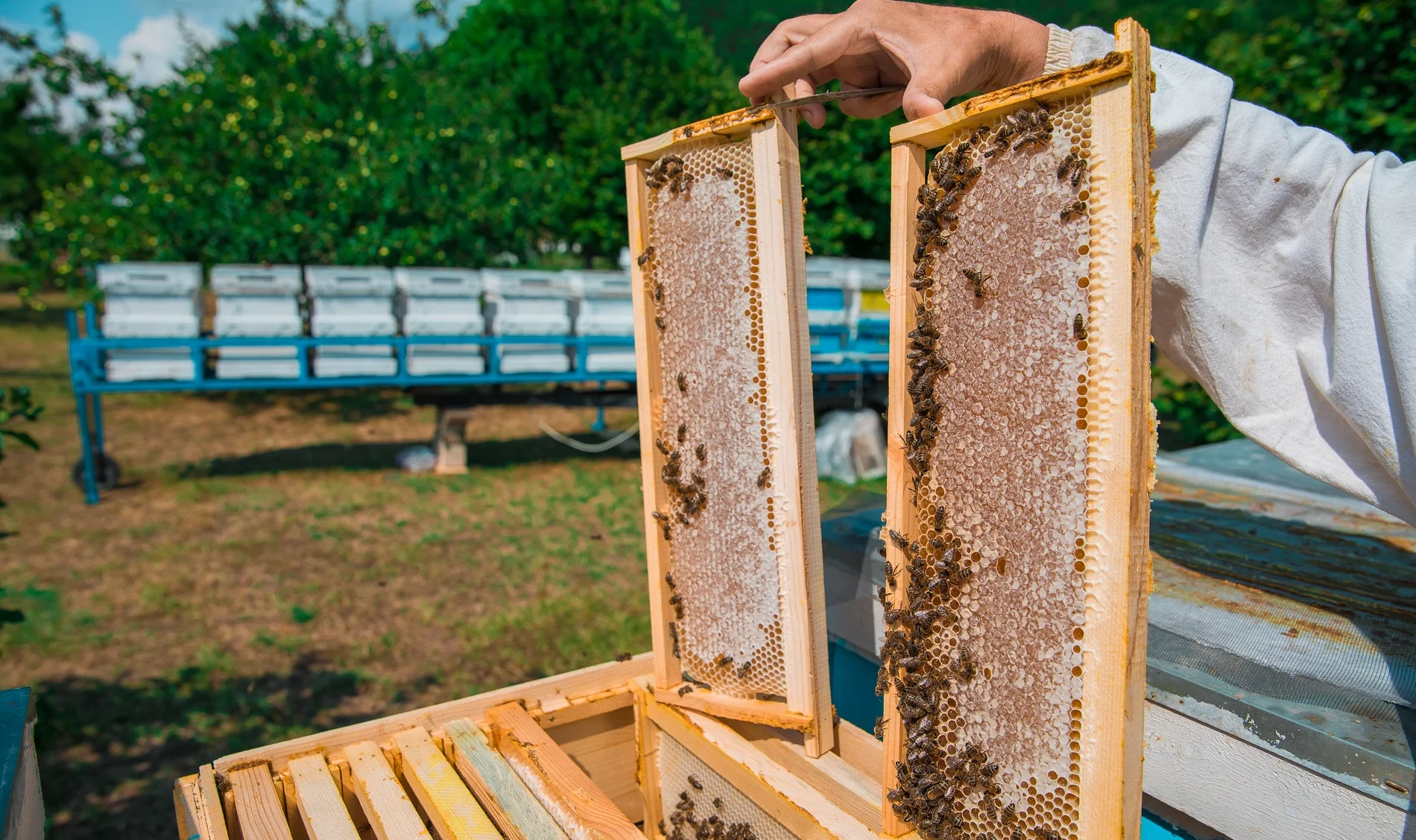The queen of a hive is the very center of the colony. As the largest bee and the only one with fully developed ovaries, she alone serves as the “mother” who lays eggs to ensure the colony’s continued existence and uses her pheromones to maintain unity among the hive. If you notice changes in your queen’s behaviors, there’s a good chance that changes are occurring within your hive.
Understanding the behavior of the queen is key to ensuring your hive remains healthy and functioning. By monitoring the changes within your hive, a beekeeper is able to detect changes that might indicate it’s time to step in to ensure a smooth transition. But knowing what signs to look out for and how to read them can be difficult, especially for beginner beekeepers who have not had years of trial and error to inform them.
As enthusiastic beekeepers just like you, Guardian Bee Apparel’s dedication to helping newcomers and hobbyists with their beekeeping needs doesn’t just stop at our commitment to providing comfortable, ventilated beekeeping suits. With years of experience tending to bees, we’ve gained the expertise to know exactly what questions a beekeeper seeking a way to ensure their colonies are happy, healthy, and primed to produce honey might need answers for.
Among those many questions, one we know has baffled apiarists throughout the world: what even is that noise?
Listen to Your Bees
Bees are noisy! But sometimes, the noises that they make aren’t just the standard buzzing you’ve come to expect. A honey bee’s primary method of communication is through a range of auditory cues and vibrations that signal key information to their honey bee. These sounds carry such meaning that by sound alone, you can potentially detect the risk of colony collapse and swarming status. With so much on the line, understanding what exactly the sounds your bees are making (and correctly addressing them) can make or break the status of your colony.
Among the noises bees are known to make, none are quite so intriguing as a queen’s “piping.”
Piping: A Queen’s Song
Piping is the catch-all term to describe unique sounds that a queen, and only the queen, is capable of making. These noises are distinguished from the standard noise of honey bees by being significantly louder and much more persistent than the standard ambient noises of a hive. This “singing” is achieved when the queen presses her thorax against the combs of the hive and rapidly vibrates her wings without extending them; this produces a unique sound that will last for several seconds and then repeat in a distinguishable pattern. For those who know what to watch out for, piping is incredibly easy to detect due to its sheer volume!
The meaning of piping has been argued for many years, but the majority of today’s consensus is that it is a queen’s way of identifying herself—both to other queens and to the hive. As such, it’s most common to see a queen’s piping within young queens or queens who are newly introduced to a hive.
Quacking vs. Tooting
Among the piping of a queen, there are usually two distinctly different noises: the quack and the toot. A toot will start with a long syllable but grow shorter throughout the noise and is generally higher pitched. A quack will remain as short bursts of noise and is much lower pitched.
A toot is a sound made by a hatched queen or a newly introduced queen. This tooting noise serves to alert the hive to a queen’s presence and can alert any other hatched queens of a rival. In these cases, a toot serves as a queen’s way of announcing that the hive should refrain from extracting any more queens. If another toot is heard, the rival queens will fight to the death until one is crowned.
However, there may be times when a toot is used by a queen intending to swarm to determine whether or not there is a successor in place. In this case, a queen will toot and listen if quacking follows.
Quacks are unique sounds performed by unhatched, virgin queens who have yet to be extracted from their wax cells. This sound effectively serves as a trapped queen’s call to alert queens and worker bees of her existence. In the event a queen intends to swarm, she can know that another queen is available to take her place.
What Does This Mean for Beekeepers
As a beekeeper, the lifecycle of a queen is essential to monitor. If you hear piping, it’s a good indication that a new queen is soon to join the hive. In most cases, a beekeeper can leave things to nature. The cycle of a hive is always such that a new queen will replace the old. However, if you notice signs that your bees are prepared to swarm, it may be worth it to consider establishing a new colony with the new swarm. In either case, we recommend monitoring your hives in the wake of piping to ensure that things have gone as planned and that your hive has a new queen. In the event that your hive has been left queenless, you may need to take extra precautions, such as introducing a new queen yourself.
Whether you’re a new apiarist or a long-time beekeeper, the sound of a piping queen can be magical to hear. We understand the joy that comes with every little step of the beekeeping journey, which is why Guardian Bee remains dedicated to offering high-quality, reliable, and functional beekeeping apparel and equipment so that you don’t have to lose those magical moments to struggle with bulky, poorly ventilated bee suits. No matter whether this is your first hive or your fifth, we’re here to make your time with your bees easy and breezy. Happy beekeeping!

